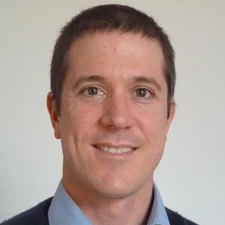Timothy Sullivan

The 2012 Plinius Medal is awarded to Timothy Sullivan for his outstanding research achievements in seismic engineering design, seismic assessment, seismic retrofit and mitigation of seismic risk.
Timothy Sullivan obtained a First Class Honours Degree in Civil Engineering from the University of Canterbury, New Zealand, and he has been the Keynote Lecturer at SMART 2010 Workshop. His PhD thesis in earthquake engineering was developed in the ROSE school, University of Pavia, Italy, and presented in 2005. It dealt with the development of seismic design guidelines for RC frame-wall structures proposing an innovative method. He also wrote an educational report on structural testing techniques in earthquake engineering and three research reports. Sullivan is particularly well recognized for his work in displacement-based seismic design (DBD) being co-editor for a Model Code for DBD09. He has worked as a consulting Engineer in England, Germany and New Zealand, where he has leaded the formation of some specialist groups in earthquake engineering and played an important role in the execution of some important international projects. He is head of the Design Methods Section at the European Center for Training and Research in Earthquake Engineering, in Pavia, Italy, and Assistant Professor at the University of Pavia. Sullivan is currently coordinating and executing research on two international projects that are expected to permit significant reductions on seismological risk. Between different services to the community, he has been supervisor or co-supervisor of 23 MSc and 6 PhD theses, and has had or has different editorial responsibilities as member of the Editorial Board of the international journal, Earthquakes and Structures. Besides his contribution to the risk mitigation throughout his work as engineer, his research in the field of earthquake engineering is very broad in nature, having made in the last years 15 peer reviewed international publications and 26 internationally recognized conferences in the fields of soil-structure interaction, seismic design of bridges, capacity design, seismic engineering of steel, and RC structures and dynamic of structures. Summarizing, Sullivan has made important contributions to the field of earthquake engineering, combining interdisciplinary skills in the related fields of seismic design and earthquake engineering dynamics.
